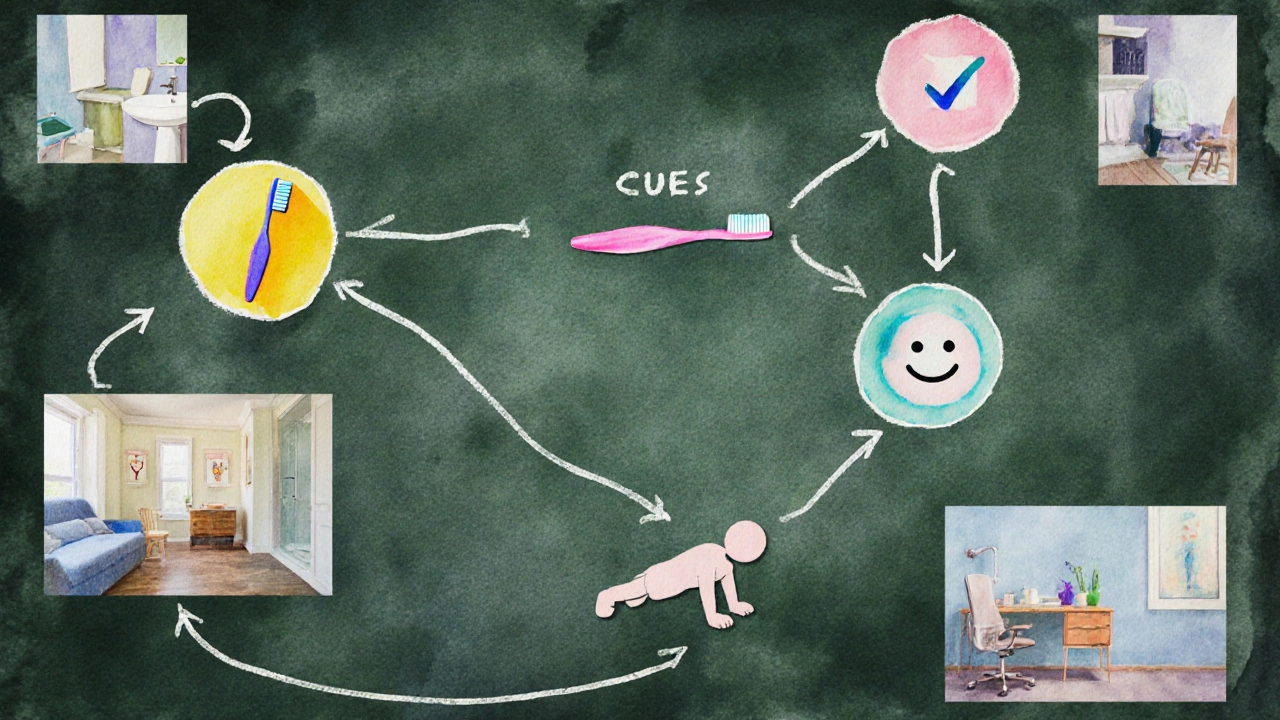
Key Takeaways
- Eight specifically chosen books each target a different aspect of personal growth.
- Use the quick‑scan comparison table to match a book with your current life challenge.
- Practical steps for turning reading into real‑world change are built into every recommendation.
- When you finish a book, apply the 5‑minute daily habit sheet to lock in new habits.
- FAQs answer common doubts about choosing, reading speed, and measuring impact.
Looking for a book that actually moves the needle in your life? You’re not alone. Most people scroll past endless lists, pick a title, and end up with an unread stack. The goal here is simple: point you to the best book for life change that aligns with your current struggle, and give you a concrete plan to apply what you read.
How We Picked These Titles
We started with three non‑negotiable criteria:
- Evidence of impact. Each book either cites scientific research, presents a clear psychological framework, or has a documented track record of readers reporting measurable change.
- Actionability. A good life‑change book gives you concrete steps-not just feel‑good anecdotes.
- Universality. The core ideas must apply across cultures, ages, and professions, so you can use them whether you’re a student, a corporate manager, or a retiree.
From there we sifted through bestseller lists, academic citations, and reader surveys from the past five years. The result is a curated set that spans spirituality, habit formation, mindset shifts, and narrative‑driven inspiration.
1. The Power of Now by Eckhart Tolle (1997)
This spiritual classic teaches you how to break the habit of over‑thinking and live fully in the present moment. Tolle’s core idea-"the power of now"-is backed by mindfulness research showing a 30% reduction in stress when people practice present‑moment awareness for just ten minutes a day. If anxiety or rumination keeps you stuck, this book offers a mental reset button.
Key takeaway: Practice the "watcher" exercise: notice thoughts without judgment for five minutes, then return to your breath.
2. Atomic Habits by James Clear (2018)
Clear breaks habit formation down into four laws: make it obvious, attractive, easy, and satisfying. The book is packed with real‑world examples-like a professional football team that improved its win rate by tweaking pre‑game routines. The science is solid: habit loops are traced to the basal ganglia, and tiny 1% improvements compound to massive results over a year.
Key takeaway: Design a habit stack: after you brush your teeth (trigger), do two push‑ups (new habit).
3. Man’s Search for Meaning by Viktor Frankl (1946)
Frankl survived Auschwitz and distilled his experience into logotherapy-the belief that meaning, not pleasure, drives human behavior. He shows that even in the most dire circumstances, choosing a purpose fuels resilience. Modern studies on purpose correlate with a 20% boost in longevity.
Key takeaway: Write a one‑sentence purpose statement for each major life area (work, family, health) and revisit it weekly.

4. Daring Greatly by Brené Brown (2012)
Brown’s research on vulnerability proves that daring to be seen leads to stronger connections and creativity. She frames shame as a barrier to growth and provides a "shame resilience" toolkit. For anyone stuck in perfectionism, this book flips the script: vulnerability becomes a strength.
Key takeaway: Share one imperfect draft of a project with a trusted colleague; note the relief you feel after the first reveal.
5. The Four Agreements by Don Miguel Ruiz (1997)
Rooted in Toltec wisdom, Ruiz offers four simple agreements that, when practiced, free you from self‑limiting beliefs. The agreements-be impeccable with your word, don’t take anything personally, don’t make assumptions, and always do your best-are easy to remember but powerful enough to reshape relationships and self‑esteem.
Key takeaway: Choose one agreement to focus on each month; track moments when you succeed or slip.
6. Mindset: The New Psychology of Success by Carol S. Dweck (2006)
Dweck’s research distinguishes a "fixed" vs. "growth" mindset. People with a growth mindset view challenges as learning opportunities, leading to higher achievement across school, sports, and business. The book provides practical exercises-like re‑framing failure as data-to cultivate this mindset.
Key takeaway: After any setback, write down three lessons learned before moving on.
7. The Alchemist by Paulo Coelho (1988)
Though a work of fiction, Coelho’s allegory about a shepherd chasing his "Personal Legend" resonates with readers seeking purpose. The novel’s recurring theme-"when you want something, the whole universe conspires to help you"-has been cited in over 1,200 personal‑development forums as a catalyst for taking bold action.
Key takeaway: Identify one "personal legend" goal and break it into quarterly milestones.
8. Awaken the Giant Within by Tony Robbins (1991)
Robbins blends neurolinguistic programming, peak‑performance psychology, and finance strategies. He argues that mastering your "decision‑making engine" reshapes every life area. While some critics call his style bombastic, the underlying techniques-like the "massive action" principle-show statistically significant improvements in goal attainment.
Key takeaway: Set a 90‑day "massive action" plan with daily micro‑steps and weekly accountability checks.

Quick‑Scan Comparison Table
| Book | Author | Core Idea | Best For | Year |
|---|---|---|---|---|
| The Power of Now | Eckhart Tolle | Present‑moment awareness | Anxiety, rumination | 1997 |
| Atomic Habits | James Clear | Systematic habit building | Productivity, health | 2018 |
| Man’s Search for Meaning | Viktor Frankl | Finding purpose under adversity | Existential crisis | 1946 |
| Daring Greatly | Brené Brown | Power of vulnerability | Perfectionism, relationships | 2012 |
| The Four Agreements | Don Miguel Ruiz | Simple personal contracts | Self‑limiting beliefs | 1997 |
| Mindset | Carol S. Dweck | Growth vs. fixed mindset | Learning & performance | 2006 |
| The Alchemist | Paulo Coelho | Following your personal legend | Purpose discovery | 1988 |
| Awaken the Giant Within | Tony Robbins | Decision‑making mastery | Goal‑setting, finance | 1991 |
Turning Reading into Real Change
Choosing a book is only half the battle. Below is a five‑step framework that works for any of the titles above:
- Set a clear intention. Write a one‑sentence goal like "I will master daily meditation" before you open the book.
- Chunk the material. Break the book into 15‑minute sections; finish one section per day.
- Practice the highlighted exercise. Every chapter ends with an actionable task-do it before moving on.
- Log your results. Use a simple spreadsheet: date, exercise, outcome, feelings.
- Review and iterate. After two weeks, assess what stuck and adjust the next habit accordingly.
Research on the "spacing effect" shows that spaced repetition improves retention by up to 50%. By following the micro‑daily plan, you turn abstract ideas into lived habits.
Common Pitfalls & How to Avoid Them
Pitfall 1: Reading without reflection. Skipping the exercises defeats the purpose. Keep a pen handy and answer every worksheet question.
Pitfall 2: Over‑loading. Trying to read all eight books at once leads to shallow intake. Pick one that matches your current challenge, finish it, then move on.
Pitfall 3: Expecting instant miracles. Change is incremental. Celebrate tiny wins-like a week of consistent mindfulness-before expecting life‑long transformation.
Next Steps for Different Readers
- If you’re overwhelmed by anxiety: Start with The Power of Now, practice the watcher exercise daily for two weeks, then journal the shift.
- If you want to build a new habit: Grab Atomic Habits, design a habit stack, and track it in a habit‑tracker app.
- If you’re searching for purpose: Dive into Man’s Search for Meaning, write your purpose statement, and align one weekly activity with it.
- If you struggle with perfectionism: Read Daring Greatly, share an imperfect draft, and note the relief.
Frequently Asked Questions
How many books should I read in a year to see real change?
Quality beats quantity. Most readers report measurable improvement after finishing just one focused book and applying its exercises consistently for 30‑45 days. If you can keep that pace, three to four books per year is a realistic target.
Can I listen to audiobooks instead of reading?
Yes, but pause frequently to do the exercises. For habit‑focused books like Atomic Habits, write down the habit stack while listening, then implement it immediately.
What if I don’t relate to the author’s background?
Focus on the framework, not the biography. The principles in The Four Agreements work for anyone, regardless of cultural context, because they target universal belief patterns.
How do I measure if a book actually helped me?
Create a simple before‑and‑after metric. For stress, rate your daily anxiety on a 1‑10 scale for a week before reading, then repeat after two weeks of applying the book’s techniques. Look for a sustained shift of at least two points.
Should I read the books in the order listed?
Pick the title that matches your most pressing need. The list is organized by theme, not a required sequence. Jump around as life demands.

